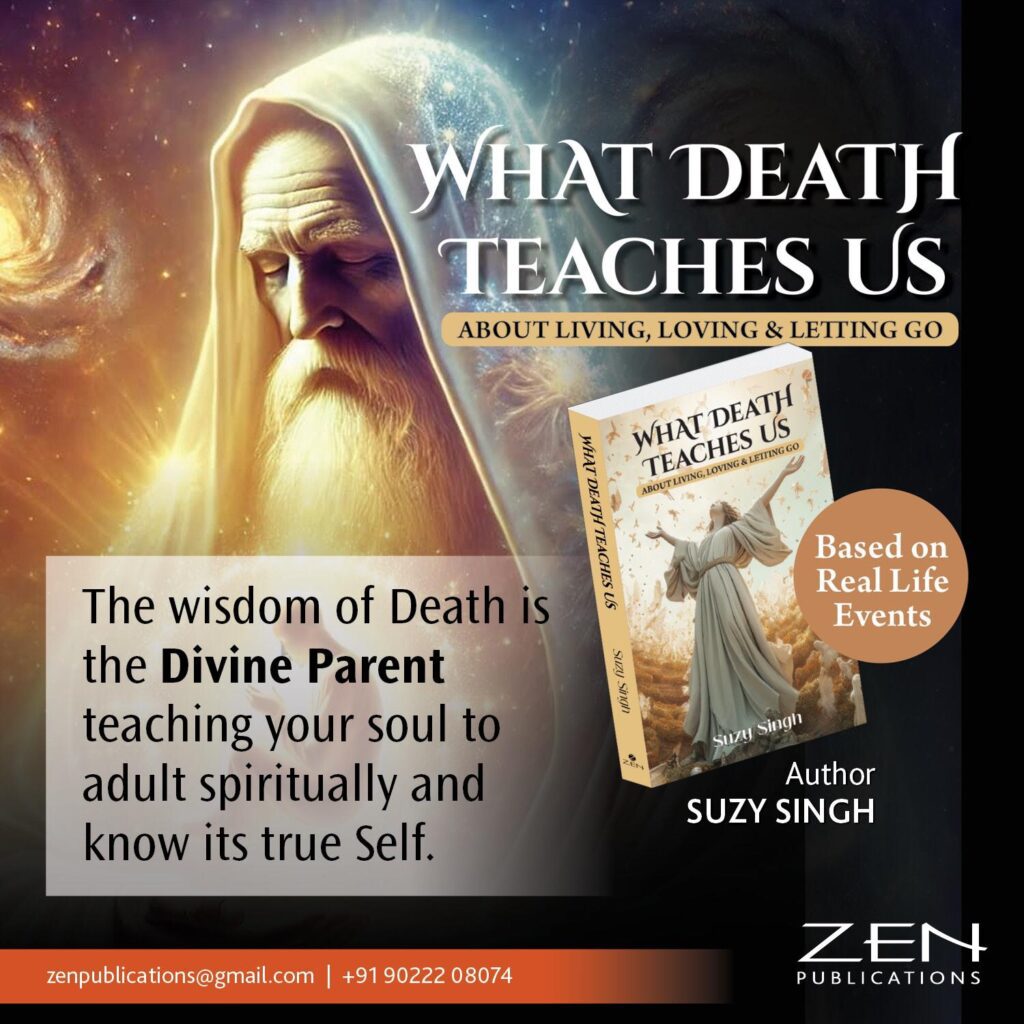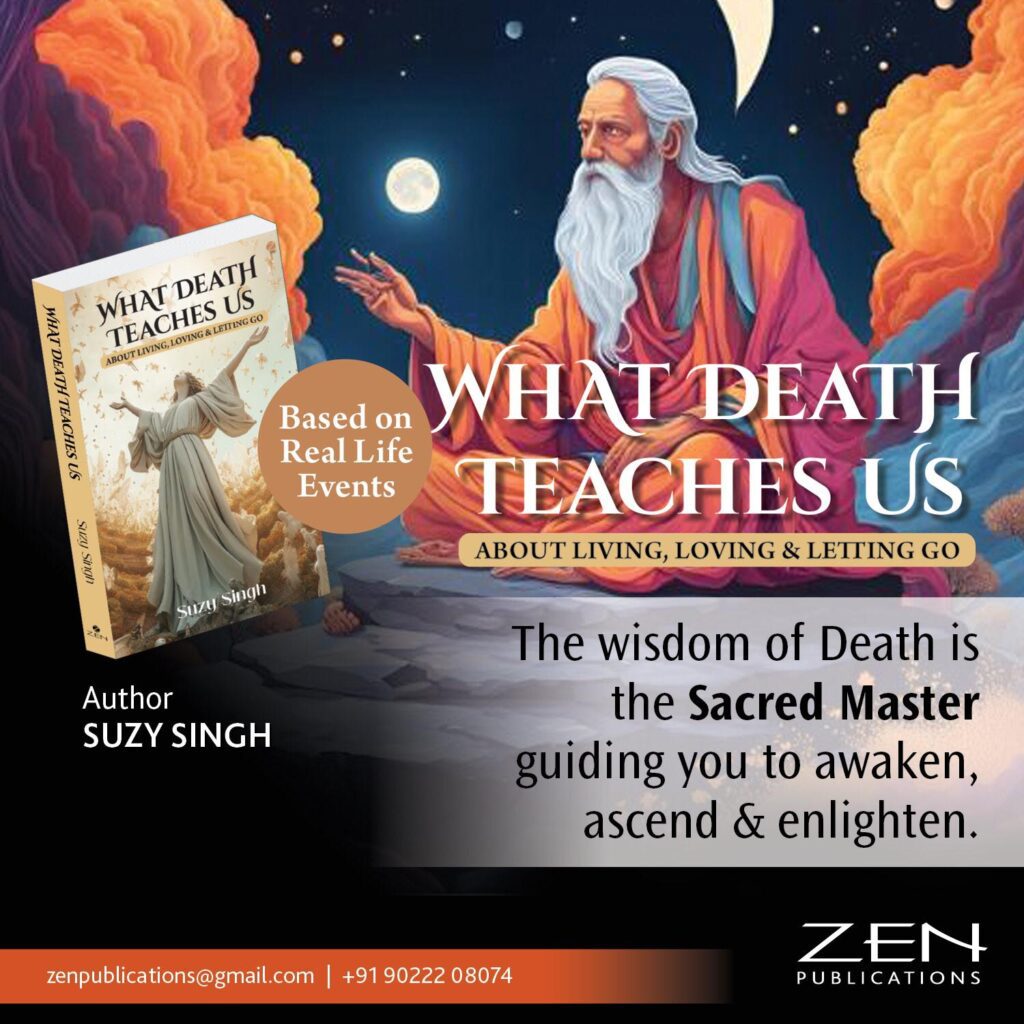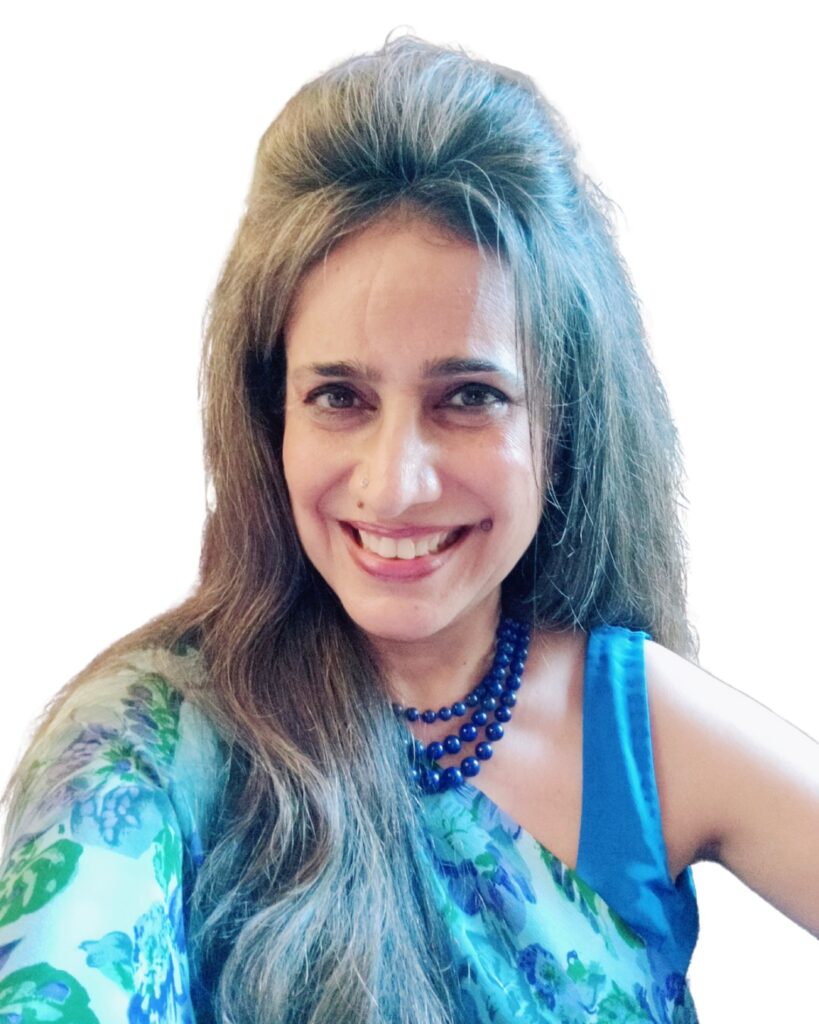Grief is often described as a storm—unpredictable, relentless, and all-consuming. For those who have lost a loved one, it is more than just an emotional upheaval; it is a transformation of the self. Death forces us to confront our deepest vulnerabilities, yet it also holds within it the potential for profound growth and self-discovery.
You may like:
- Yoga, Chai, and More: Timeless Indian Practices That Effectively Manage Stress
- Cherishing the Past, Embracing the Present: A Midlife Perspective on Nostalgia
- All-Women Trips: The Ultimate Way to Chill and Rejuvenate!
Few understand this journey better than Suzy Singh, an international author, mental health therapist, clinical hypnotherapist, relationship counsellor and grief expert. Having spent decades counselling individuals through their darkest moments, Suzy has dedicated her life to helping others find meaning beyond loss. In her latest book, What Death Teaches Us: About Living, Loving, and Letting Go, she explores the complexities of grief and the invaluable lessons it imparts, with a strong emphasis on healing.

Quick Summary
Grief expert Suzy Singh explores the transformative power of healing after loss in her book What Death Teaches Us. She delves into grief myths, active grieving techniques, and the role of community in the healing journey. Through the Grief Relief Circle, Suzy provides support for those mourning, emphasizing that true healing comes from embracing love, connection, and self-care. Her work offers a profound perspective on loss as a pathway to healing and growth.
The Weight of Loss
The pain of losing a loved one is a universal experience, yet each person grieves differently. Some seek solace in solitude, others in shared memories, and many wrestle with emotions they never knew existed. “Death has fascinated me since childhood,” Suzy reflects. “The loss of my father at the onset of COVID-19, coupled with the grief that permeated the entire planet in the period thereafter, intensified my need to write this book”.
During the pandemic, Suzy established the Grief Relief Circle, an online sanctuary where the bereaved could find support and healing. “The world was in lockdown, and so many were grieving alone. It felt tragic and unfair. No one should have to endure such loss in isolation,” she says.
The Myths and Realities of Grief
- Society often perpetuates misconceptions about grief, making it even harder for individuals to navigate their pain. Some of the most common myths include:
- “You need to be strong for others.” Suppressing grief only prolongs healing, negatively impacting your well-being.
- “Time heals all wounds.” Grief is not a passive process; it requires active engagement.
- “Talking about the deceased keeps you stuck in the past.” On the contrary, remembering and honouring them is an integral part of healing.
- “Moving on means forgetting.” Love transcends grief; cherishing memories does not diminish loss.


Active Grieving: A Path to Healing
Healing from grief does not mean forgetting or erasing the pain; rather, it involves embracing it with awareness. In What Death Teaches Us, Suzy introduces the concept of active grieving—a conscious approach to processing loss. This involves:
- Setting aside time each day to reflect on and express grief.
- Writing letters to loved ones who have passed.
- Engaging in self-care practices to nurture the body and mind for holistic healing.
- Finding ways to stay connected to the deceased through dreams, symbols, and spiritual practices that support healing.
“You can connect with the deceased through dreams, signs, and mystical experiences,” Suzy explains. “They may not be with you physically, but I have witnessed repeated evidence that they remain present astrally, offering comfort and healing.”
Community and Compassion
While grief is deeply personal, healing is often found in connection. The Grief Relief Circle has become a refuge for many, offering a safe space where loss is acknowledged without judgment. “Sitting with the broken takes immense courage. It requires selflessness, deep listening, and the willingness to hold space for another’s sorrow,” Suzy shares.
Through years of working with grief, she has witnessed the power of shared mourning. “It is in moments of darkness that we realize the importance of human connection. The kindness of a stranger, a shared story, or a simple gesture of support can become a turning point in someone’s healing journey.”
A New Way to Look at Death
For many, death is a source of fear and avoidance. But Suzy urges us to shift our perspective. “Death is not an end; it is a transition. It teaches us how to live, love, and ultimately, let go. It is a reminder to cherish each moment, nurture relationships, and honour the love that never dies. “
Her book is a guiding light for those navigating loss, offering philosophical, psychological, and mystical insights into the nature of grief. From understanding the ancestral influences on mourning to discovering ways to communicate with loved ones beyond the physical realm, What Death Teaches Us is a roadmap to healing.
Finding Peace After Loss
If you are grieving, remember: healing does not mean leaving behind those we have lost. It means carrying their love forward, finding strength in their memory, and allowing ourselves to continue living.
“Love is eternal—it endures through life, the afterlife, and beyond.”
For those seeking solace, What Death Teaches Us: About Living, Loving, and Letting Go is available on Amazon.
About Suzy Singh

Suzy Singh is a renowned mental health therapist, grief expert, clinical hypnotherapist, relationship counsellor and international wellness speaker. She is the author of What Death Teaches Us: About Living, Loving, and Letting Go and several other books and card decks on spirituality and healing. With over two decades of experience, she has guided thousands through grief, trauma, and personal transformation. Suzy founded the Grief Relief Circle, a humanitarian initiative providing free support to those coping with loss. She has been a jury member for the Business World 40 Under 40 Well-being and Healthcare Awards since 2021 and was one of three relationship experts on the 20-episode PMC Hindi TV show Rishton Ki Dori.






